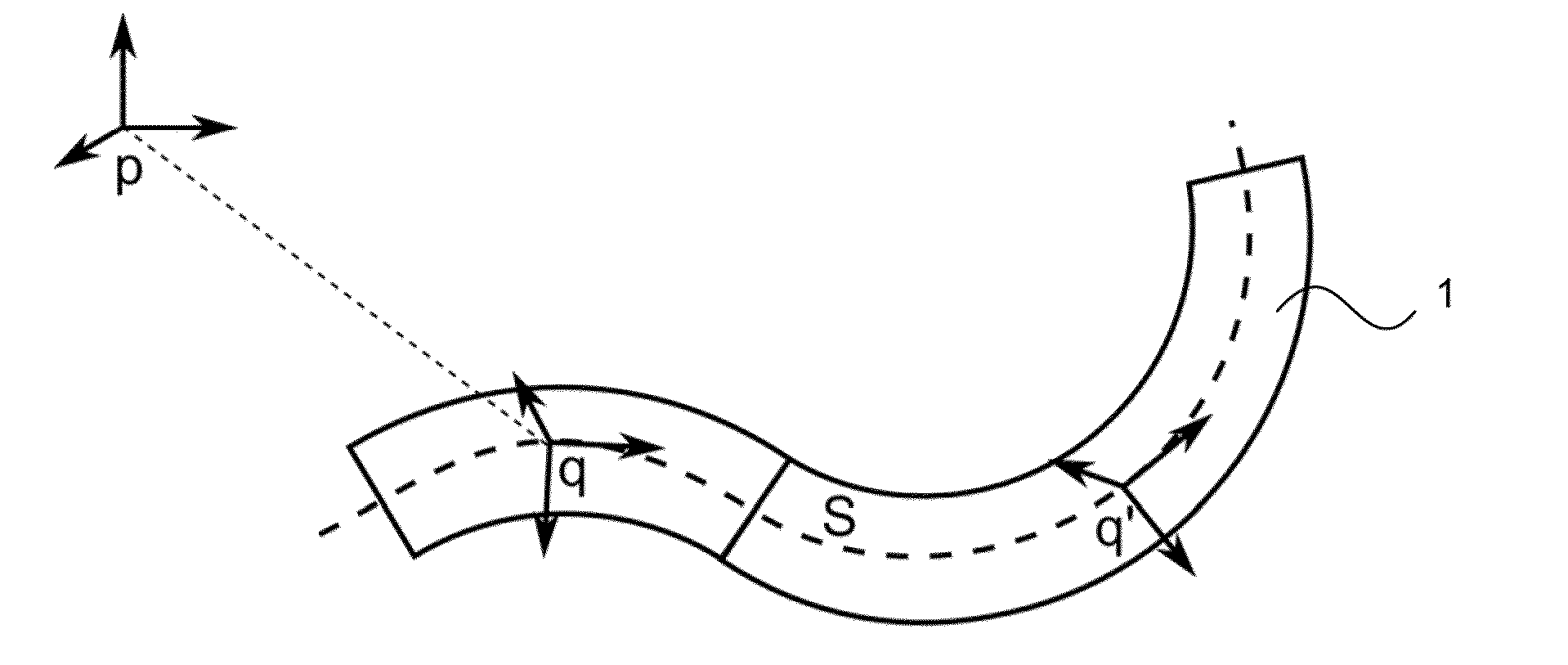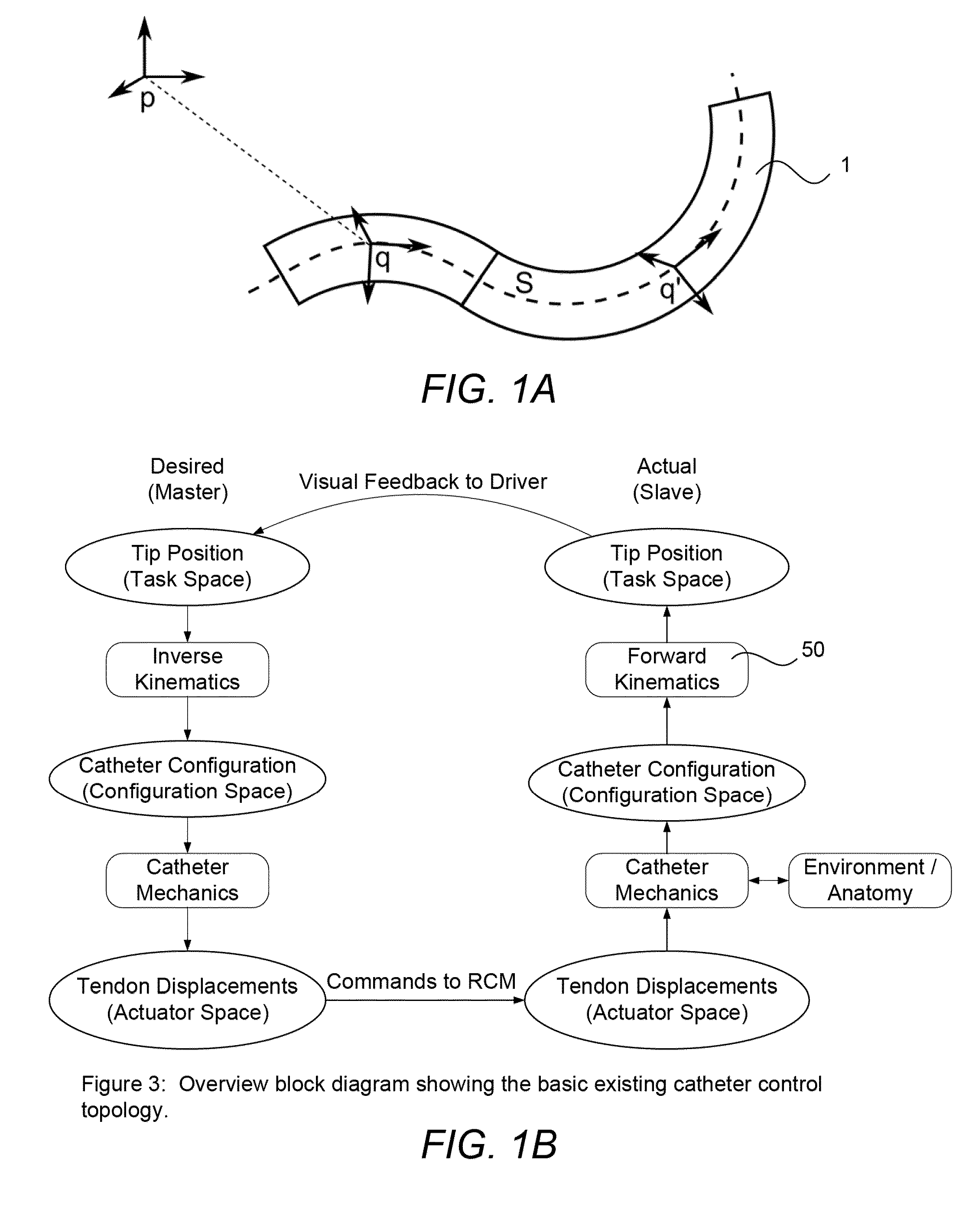Methods and devices for controlling a shapeable instrument
a shapeable instrument and control method technology, applied in the field of medical instruments, can solve the problems of differential between the actual position, unanticipated or unmodeled constraints imposed by the patient's anatomy, and the control is subject to multiple sources, so as to facilitate the estimation and control of the reaction for
- Summary
- Abstract
- Description
- Claims
- Application Information
AI Technical Summary
Benefits of technology
Problems solved by technology
Method used
Image
Examples
Embodiment Construction
[0124]Referring to FIG. 2A, a conventional manually-steerable catheter (1) is depicted. Pullwires (2) may be selectively tensioned through manipulation of a handle (3) on the proximal portion of the catheter structure to make a more flexible distal portion (5) of the catheter bend or steer controllably. The handle (3) may be coupled, rotatably or slidably, for example, to a proximal catheter structure (34) which may be configured to be held in the hand, and may be coupled to the elongate portion (35) of the catheter (1). A more proximal, and conventionally less steerable, portion (4) of the catheter may be configured to be compliant to loads from surrounding tissues (for example, to facilitate passing the catheter, including portions of the proximal portion, through tortuous pathways such as those formed by the blood vessels), yet less steerable as compared with the distal portion (5).
[0125]Referring to FIG. 2B, a robotically-driven steerable catheter (6), has some similarities with...
PUM
 Login to View More
Login to View More Abstract
Description
Claims
Application Information
 Login to View More
Login to View More - R&D
- Intellectual Property
- Life Sciences
- Materials
- Tech Scout
- Unparalleled Data Quality
- Higher Quality Content
- 60% Fewer Hallucinations
Browse by: Latest US Patents, China's latest patents, Technical Efficacy Thesaurus, Application Domain, Technology Topic, Popular Technical Reports.
© 2025 PatSnap. All rights reserved.Legal|Privacy policy|Modern Slavery Act Transparency Statement|Sitemap|About US| Contact US: help@patsnap.com



